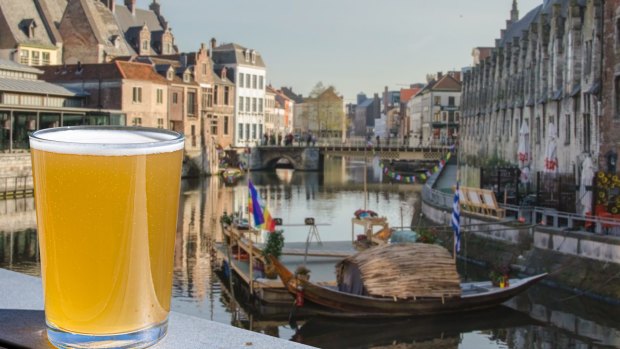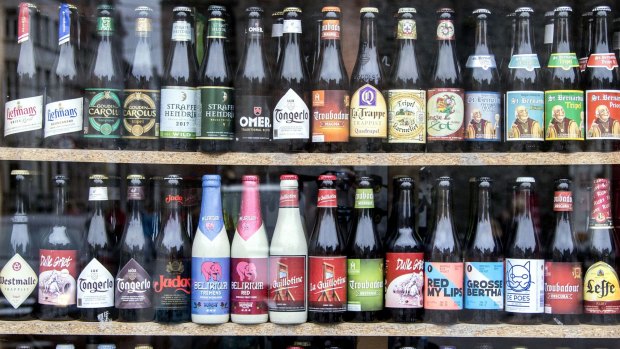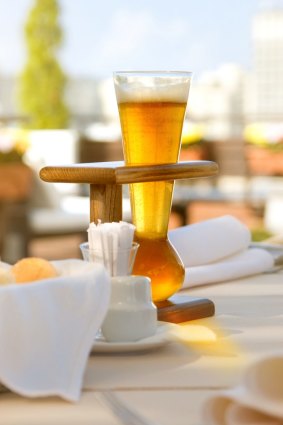This was published 2 years ago
Belgian beer guide: How Belgium created the world's best beers
By Brian Johnston

Brew with a view: Beer is an ancient tradition in Belgium.Credit: iStock
Belgium produces the world's best beer.
The nation has been in the business since the 12th Century and has more than 200 breweries producing 1500 types of amber pleasure. The Belgians know their beers, choosing them to suit the season, the food or the special occasion, with special beers brewed for Christmas, festivals and sometimes weddings.
If you think good beer only comes on tap, think again. Some of the best Belgian speciality beers are only sold in bottles, and you'll miss out on some top drops if you never pop a cap. That allows not just pubs but restaurants to have extensive beer lists. Beer matching is common in restaurants.

The Belgians have a beer to suit every occasion.Credit: iStock
Rule of thumb: wheat beer with seafood, dark beer with beef, blonde or Tripel (a strong pale ale) with pork and chicken. Beer is also frequently used as an ingredient in traditional Belgian casseroles and stews, and more recently in contemporary dishes from mussels to ice cream. Some beers taste like chocolate and are as good as dessert.
Belgium's most famous beers are the smooth, rich Trappist beers made in one of six Cistercian monasteries; good luck hunting down limited-volume Westvleteren 12, considered one of the world's best brews. Trappist beers aren't to be confused with abbey beers, which might once have been made in monasteries but are now controlled by big breweries (Stella Artois owns the best-known brand, Leffe). Still, they're also generally malty, complex and worth drinking.
Unlike Germans, Belgians can add flavours such as orange, lemon or cardamom to their beers. Many fruity flavours are added to lambic beers to make their sourness more palatable. Lambic beers are fermented by exposure to naturally occurring yeast in the Zenne Valley and are the oldest type of beer in Europe, though without flavouring perhaps only for the aficionado. However, Kriek Boon, which contains cherries, might convert the doubting to this wine-like type of beer on summer days.

How Kwak beer is served: Aesthetically pleasing, if not practical. Credit: iStock
Standard beer glasses don't exist in Belgium. Glasses are relatively small since Belgian beer has high alcohol content, and are distinctively shaped for each brand – straight, wide-mouthed, stemmed, tulip-shaped – which supposedly brings out the beer's particular characteristics.
The most amusing might be for Kwak, whose glass looks like a piece of chemistry equipment and requires a wooden stand to keep it upright. Scoff at your peril, because beer is a serious matter in Belgium.
See also: Drink your way through lockdown: 13 tipples to take you around the world
See also: The 'Auckland Beer Mile' is the ultimate Kiwi pub crawl
Sign up for the Traveller Deals newsletter
Get exclusive travel deals delivered straight to your inbox. Sign up now.